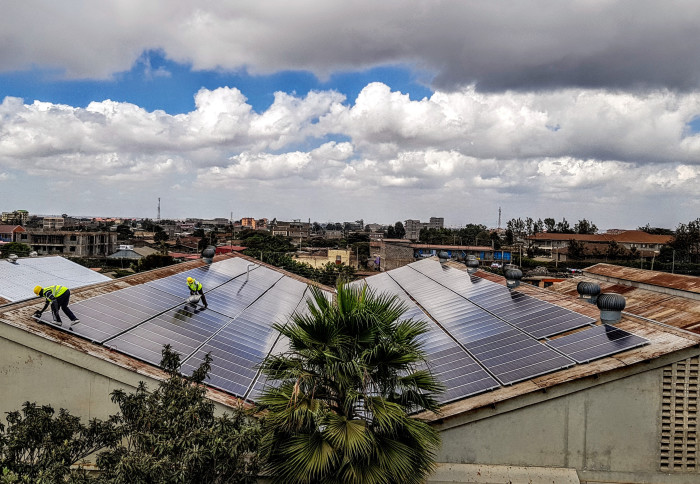
A consortium including researchers from Imperial College London has created a bespoke energy and emissions model to help Kenya meet its climate goals.
The Kenya Carbon Emissions Reduction Tool (KCERT 2050) allows users to test options to reduce climate change-inducing carbon emissions at a faster rate and build a pathway that meets emissions targets at long term to 2050 and beyond.
KCERT will support and stimulate the debate on decarbonization in Kenya. Dr Onesmus Mwabonje
It can be used to support policy development to enable governments to scale up national action on climate change and build ambition in line with the 2015 Paris Agreement.
The interactive energy model – the first in East Africa – was produced as part of the UK government’s international 2050 Calculator programme, funded by the Department for Business, Energy and Industrial Strategy. It was led by global engineering, management and development consultancy Mott MacDonald and a consortium including Imperial College London, Climact and Ricardo.
KCERT 2050 is designed to help policymakers, energy producers and consumers (including the public) in Kenya understand the energy and emissions choices they make, by providing a platform to engage in dialogues on the challenges and opportunities of the future energy system and responses to climate change. The project gives Kenya the opportunity to pioneer climate change mitigation approaches in the East African region.
Stimulating the debate on decarbonization
Dr Onesmus Mwabonje, a researcher at the Center for Environmental Policy at Imperial College London and a core member of the Kenya Consortium team, said: “KCERT will support and stimulate the debate on decarbonisation in Kenya, helping to break down silos and build consensus within government. departments needed to effectively combat, mitigate and adapt to climate change.
“The decision-support capability that the International 2050 Calculator program has developed on modeling complex transitions and technology options will have a lasting impact in the country and beyond.”
Dr John Olukuru, Head of Data Science and Analytics at Strathmore University and Lead Modeller at KCERT added: “The Kenya Carbon Emissions Reduction Tool (KCERT) 2050 is an important tool policy-making tool in the field of climate change that will help every Kenyan, expert or non-expert, to engage in a well-informed debate on climate change.
“The calculator takes into account all sectors, stakeholder contributions and various scenarios which provide a huge volume of data and thus lays the foundation for the application of AI and machine learning to monitor and reduce emissions. carbon footprint, streamlining operations to enable every decision-maker to recognize that climate action provides an opportunity to create value by tapping into new markets and meeting growing demand for low-carbon and greener services.
Advancing Kenya’s Net Zero Transition
KCERT 2050 is an integrated model of energy demand and supply, emissions and land use in Kenya. It aims to identify secure energy trajectories for energy demand and supply between 2015 and 2050.
It was developed on the framework of the UK 2050 calculator and adapted to the Kenyan situation. It sets out a range of four trajectories for the kinds of changes that could occur, ranging from business as usual to high ambition. These trajectories are intended to reflect the full range of potential future scenarios that could be observed in this particular sector.
David Orr, Head of Emerging Markets Trade and Investment for Mott MacDonald and Country Program Manager for Kenya, said: “It was such a pleasure to work with the team to create the KCERT 2050 tool. Over the next few years, the tool will play a pivotal role in promoting Kenya’s net zero transition, inspiring policy makers across East Africa.




